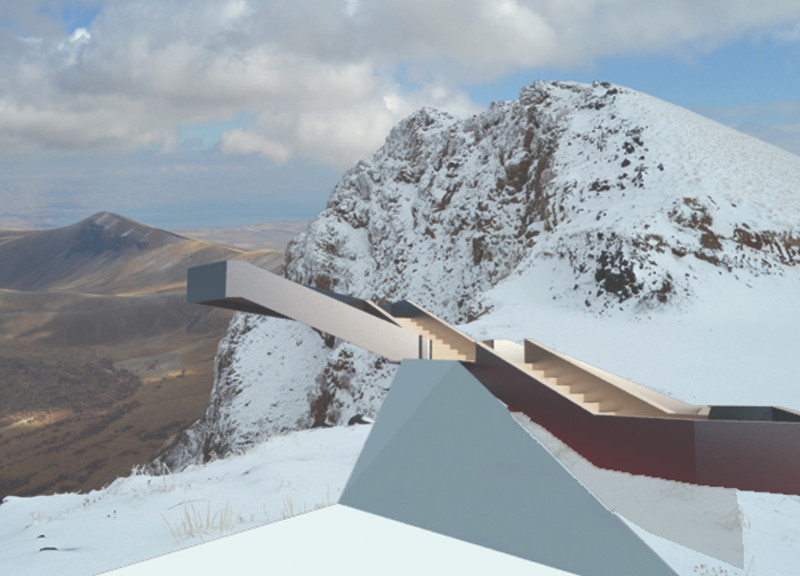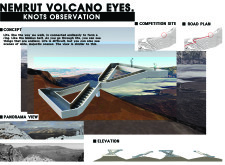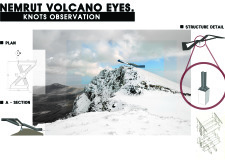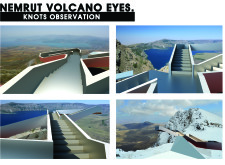5 key facts about this project
### Overview
The Nemrut Volcano Eyes – Knots Observation is a viewing platform designed for the remarkable terrain surrounding Nemrut Volcano in Turkey. The project aims to create a meaningful engagement with the landscape, drawing attention to the unique geological features and offering visitors a space for reflection and observation. The architectural form connects visitors to their environment while facilitating an immersive experience in this geologically significant area.
### Spatial Strategy
The design employs a zigzagging form that responds to the site's topography, guiding visitors along a dynamic pathway that encourages exploration. The structure’s angles and lines create visual interest and invite movement. As visitors ascend the platform, the design intentionally varies elevation, providing multiple perspectives of the expansive vistas, from the volcanic formations to the surrounding flora and water bodies. This approach fosters both communal experiences and opportunities for personal contemplation, allowing for an intimate connection with the landscape.
### Materiality and Environmental Integration
Materials have been carefully selected to ensure the structure's resilience and aesthetic alignment with its surroundings. Reinforced concrete serves as the primary massing material, offering structural integrity suitable for the volcanic environment. Steel elements are integrated into the stairways, maintaining a lightweight appearance while providing strength. The use of glass panels in certain areas enhances visibility and safety, allowing visitors to fully engage with the stunning views. Natural stone sourced locally will further establish a contextual connection, reinforcing the platform's relationship with the environment.
Unique features of the design emphasize both sustainability and cultural significance. The architecture seeks harmony with the natural landscape, echoing the forms of the volcanic terrain rather than imposing upon it. The choice of local materials reflects an ecological consideration, aligning the project with broader environmental sustainability goals while inviting visitors to reflect on the region’s geological and historical narratives.





















































